Want to know how to look after your lawn throughout spring, summer, autumn, and winter?
In this guide, we’ve shared the essential lawn maintenance tasks in the UK, categorized into the four seasons. We’ve also shared our quick-fire lawn care tips at the end.
✅Key Takeaways:
Spring lawn maintenance tasks include raking, aerating, overseeding, and scarifying your lawn, applying a spring lawn feed, and doing your first mow of the season.
Summer lawn care tasks include mowing your lawn at least once a week, watering your lawn when necessary, and spot-treating weeds.
Autumn lawn care tasks include mowing your lawn when necessary, overseeding bald or thinning areas, and using an autumn/winter lawn feed.
Winter lawn maintenance tasks include mowing only if needed, servicing your mower, and preparing your soil to sow seed.
Table of Contents
🗓 Lawn Care Calendar
Save this handy lawn care calendar to remind you of the tasks you need to complete every month of the year.
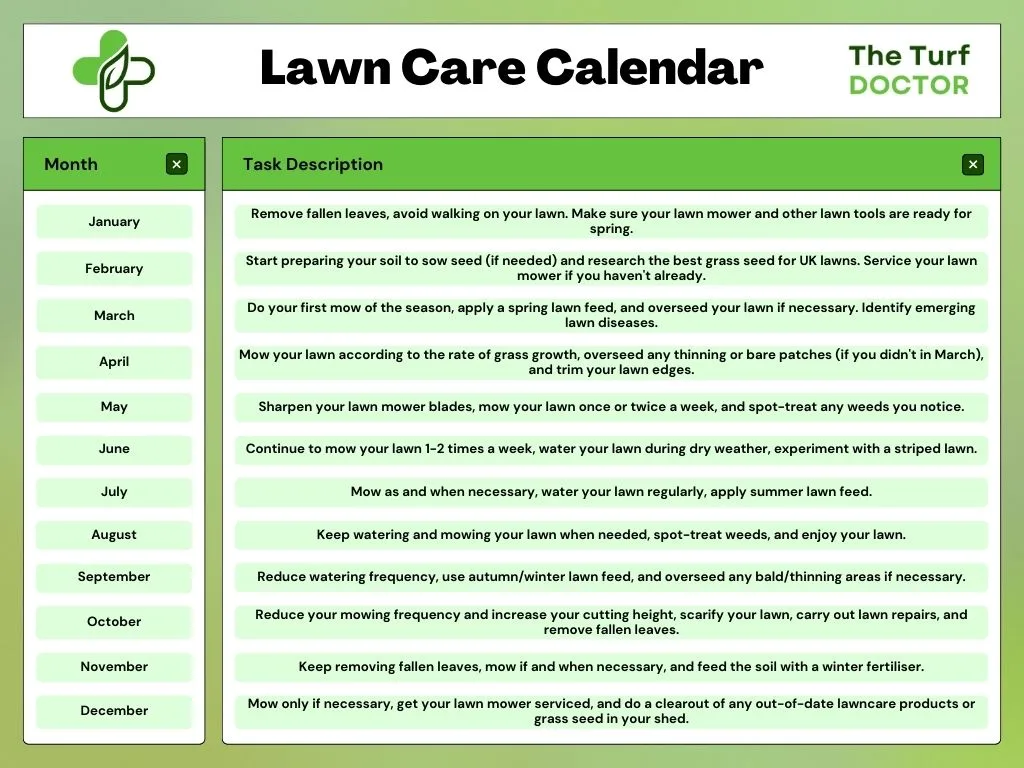
- January: Remove fallen leaves, avoid walking on your lawn. Make sure your lawn mower and other lawn tools are ready for spring.
- February: Start preparing your soil to sow seed (if needed) and research the best grass seed for UK lawns. Service your lawn mower if you haven’t already.
- March: Do your first mow of the season, apply a spring lawn feed, and overseed your lawn if necessary. Identify emerging lawn diseases.
- April: Mow your lawn according to the rate of grass growth, overseed any thinning or bare patches (if you didn’t in March), and trim your lawn edges.
- May: Sharpen your lawn mower blades, mow your lawn once or twice a week, and spot-treat any weeds you notice.
- June: Continue to mow your lawn 1-2 times a week, water your lawn during dry weather, experiment with a striped lawn.
- July: Mow as and when necessary, water your lawn regularly, apply summer lawn feed.
- August: Keep watering and mowing your lawn when needed, spot-treat weeds, and enjoy your lawn.
- September: Reduce watering frequency, use autumn/winter lawn feed, and overseed any bald/thinning areas if necessary.
- October: Reduce your mowing frequency and increase your cutting height, scarify your lawn, carry out lawn repairs, and remove fallen leaves.
- November: Keep removing fallen leaves, mow if and when necessary, and feed the soil with a winter fertiliser.
- December: Mow only if necessary, get your lawn mower serviced, and do a clearout of any out-of-date lawncare products or grass seed in your shed.
🌱 Spring Lawn Care Tasks
March-May
Spring in the UK begins in March and spans until late May. Here are the essential lawn care tasks to carry out at this time of the year:
🧹 Clean And Rake Your Lawn
If you haven’t had the time or the will to do much lawn care over the winter, start by cleaning and raking your lawn once the weather warms.
Rake your lawn to remove rotting leaves and twigs, which could smother your grass plants and cause them to turn yellow or die.
Don’t have any debris on your lawn? Move straight on to the next task.
💨 Aerate And Scarify Your Lawn
Spring is also a great time to aerate and scarify your lawn.
Aerating your lawn is when you perforate the ground with small holes, which allows air, nutrients, and water to reach the grass roots. You can aerate your lawn with a garden fork, a rolling lawn aerator, or even special aerating shoe attachments to give your shoes spiky soles.
The video below explains clearly how to aerate your lawn in the UK.
Scarifying your lawn is removing moss or dead organic matter from around the base of your lawn (also known as the thatch layer). Without removing thatch, it dries out and thickens, creating a barrier that prevents moisture and nutrients from reaching the soil.
The quickest way to scarify your lawn is with a lawn scarifier or raker. We recommend the BLACK+DECKER Lawn Raker because it has three height settings depending on the job at hand, and it’s great at stripping moss and other organic material.
🌱 Apply A Spring Lawn Feed
You don’t have to use a lawn feed at any time of the year, but lawn fertilizers help your grass to grow greener and thicker, so they’re a must if you want to have the healthiest lawn year-round.
A spring lawn feed supplies a regular amount of nutrients over several weeks and helps keep your lawn weed-free, reducing your maintenance tasks later in the year. Apply fertilizer according to the manufacturer’s instructions, making sure to wait until your grass is actively growing.
We recommend the Richard Jackson Flower Power Premium Lawn Magic lawn feed, which is one of the best-rated spring lawn feeds on Amazon and produces noticeable results (check out the before and after photos in the customer reviews).
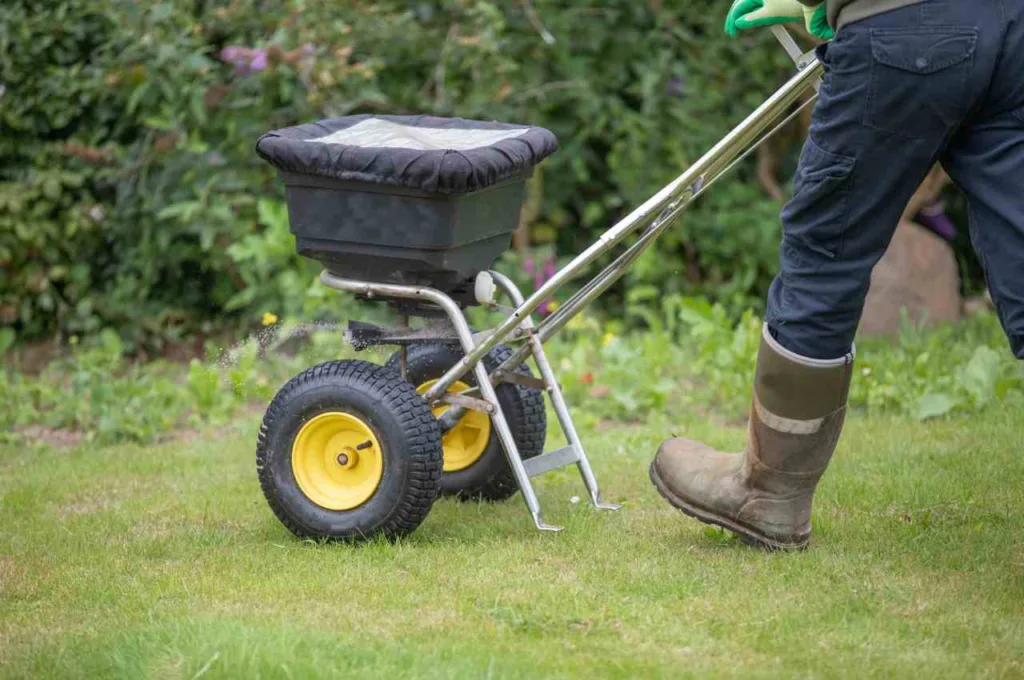
🌾 Overseed Your Lawn
If you have bare patches or areas of thinning grass, reseed your existing lawn with a quality grass seed product.
Spring is one of the best times to sow grass seed because the soil is warm, there’s lots of moisture, and the weather isn’t too hot or too cold.
Check out our top recommended grass seeds in our guide to the best grass seeds for home lawns in the UK.
✂️ Sharpen Your Lawn Mower Blades
Your mower is about to put in a big shift, so if you haven’t already sharpened the blades, do it now.
You should sharpen your lawn mower blades at least once a year. Keeping your mower blades sharp will help you to neatly and evenly cut your grass, while dull mower blades will rip or tear the ends of your grass blades, leading to poor grass health.
Looking for a mower blade sharpener? We recommend the SHARPAL 103N All-in-1 Knife and Garden Tool Blade Sharpener because it’s the most affordable, high-quality, and versatile sharpening tool that’s favored by more than 10,000 customers.
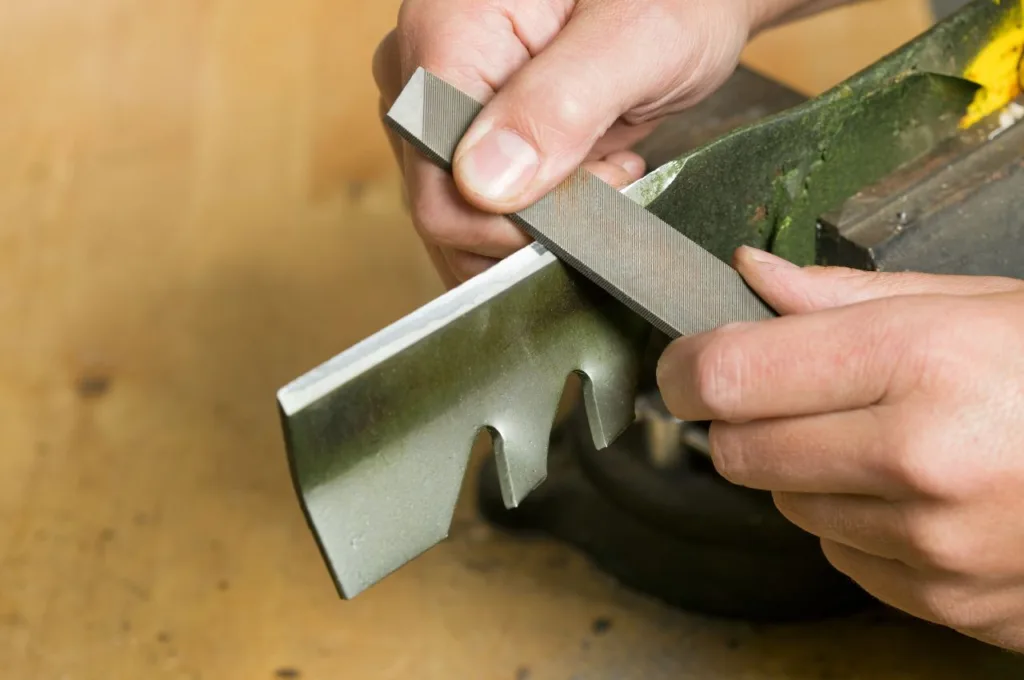
🥇 Do Your First Mow Of The Season
As soon as the last frost passes and you get a dry spell, mow your lawn for the first time this grass-growing season.
Mow with a high cutting height, so you only take the tops off the grass. This will encourage it to grow thickly. It’ll also prevent your mower from getting choked with too much grass if your lawn is slightly overgrown.
After your first mow, establish a lawn mowing schedule. In spring, you usually don’t need to mow any more than once every fortnight.
🌞 Summer Lawn Care Tasks
June-August
From June to August is when you’ll use your lawn the most. It’s also the hottest season, and the period when grass grows fastest, so you’ll have the most lawn care tasks to get on with.
📅 Mow Your Lawn Once A Week
Regular mowing is the number one lawn care task in the summer season.
Summer brings long hours of sunlight and warmer weather, which helps grass grow rapidly. You should mow your lawn once a week, or twice a week, depending on how quickly the grass grows.
Remember the one-third rule – never cut more than one-third off the height of your grass at once. Make sure to collect your grass clippings and put them in your garden waste bin or on your compost heap.
Looking for further reading? Take a look at our top 8 tips on how to cut grass properly.
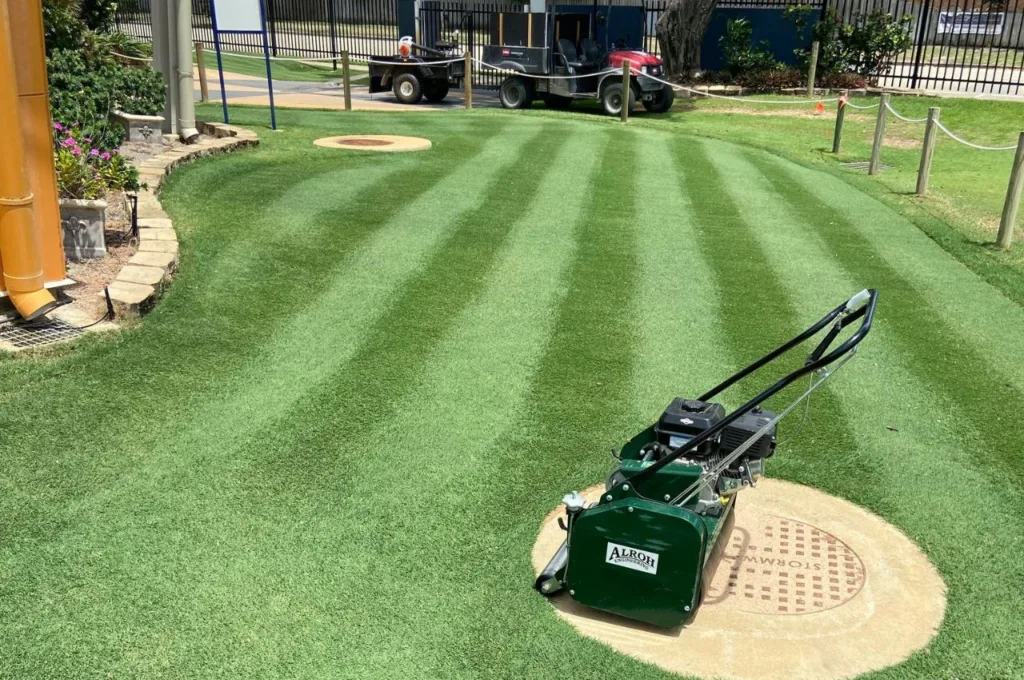
🚿 Water Your Lawn
Summer is also the dryest time of the year, so starting from June, lawn care may involve watering your lawn to keep it hydrated.
How do you know when your lawn needs watering? Try inserting a sharp metal object, like a screwdriver, into the ground. If it penetrates the soil easily, there’s no need to water. If you struggle to insert the screwdriver or it’s dry when you remove it, your lawn could do with some water.
Water your lawn in the early morning to reduce evaporation. It’s best to water less often (about once a week rather than once a day) but thoroughly. Keep watering the same spot until puddles form, then move on.
🔁 Experiment With A Striped Lawn
Since summer is the season when your grass should grow the greenest and the thickest, now is the time to get your lawn looking as beautiful as possible.
An easy way to do this is to mow stripes on your lawn. There’s no secret sorcery to this – you just need a lawn mower with a decent rear roller.
We recommend the Hyundai HYM3800E Corded Electric Rotary Lawnmower With Rear Roller as the best corded electric lawn mower for a striped lawn. It’s got a weighty rear roller and produces a noticeable stripe after just a few mows.
Looking for more tips on achieving a beautifully striped lawn? Check out our guide to mowing stripes on your lawn.
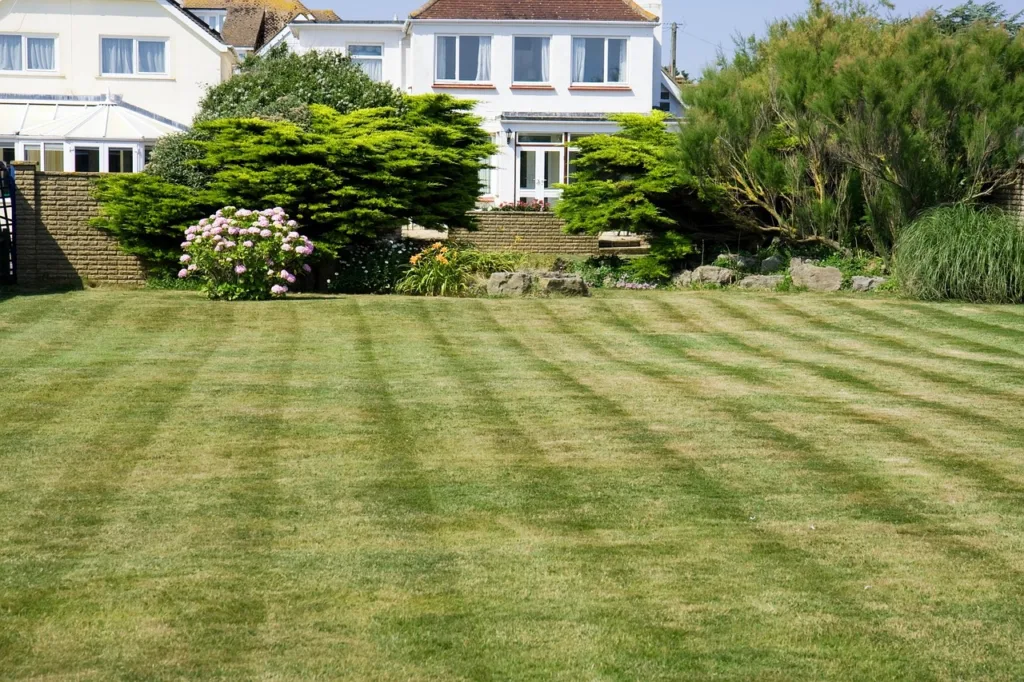
🧪 Apply A Spring/Summer Lawn Feed
Your grass might be growing brilliantly by June, but if you think it could still do with a boost, apply the same lawn feed that you used in spring.
Again, follow the manufacturer’s instructions and only apply the recommended amount. A good fertilizer should improve your lawn’s vigour and give your grass health a boost – especially if your lawn has dried out slightly due to the hot, dry weather.
🍀 Spot-Treat Weeds
Lawn weeds grow quickly during the summer for the same reason that your grass grows: all that sunlight.
Take the time at least once a week to check your lawn for weeds and remove any that you find. It’s best to spot-treat weeds and weed grasses to avoid damage to the rest of your lawn.
When possible, pull the weeds out of the ground by grasping firmly around the thickest part of the weed and pulling sharply. Make sure the roots come out too, or the weed will grow back.
If you have a persistent weed problem, consider using weed treatments that are suitable for lawns. We recommend avoiding these treatments as much as possible – instead, fertilize and overseed your lawn, which will encourage your lawn grass to grow thickly and choke out the weeds.
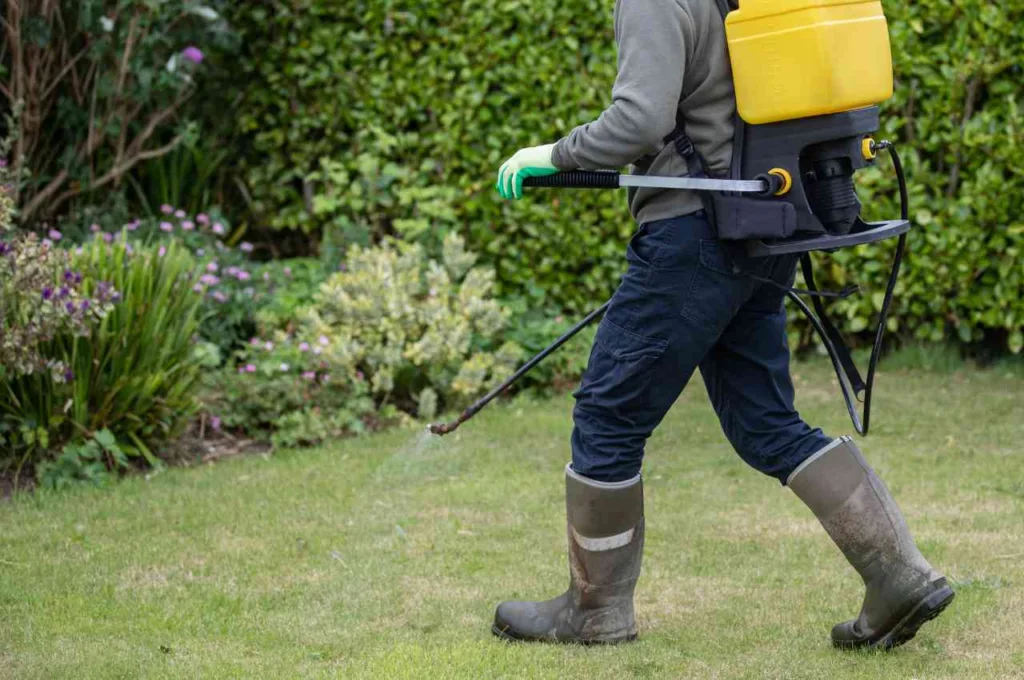
🤸🏿 Enjoy Your Lawn!
In the UK, we only really get to spend time in our gardens in the summer – so don’t forget to admire your hard work and enjoy your lawn!
A well-established lawn should be tolerant of the summer activities it might be exposed to, such as playing children and garden furniture.
Just make sure to move your lawn furniture back to a solid area (such as your decking or a slabbed part of your garden) when it’s not in use to prevent it from blocking sunlight to the grass underneath.
🍂 Autumn Lawn Care Tasks
September-November
Autumn is one of the wettest times of the year in the UK, and this, coupled with the mild weather at the start of the season, will encourage dormant grass to grow quickly – and also encourages fungal diseases and other nasties.
Here are the top lawn care tasks for the autumn season:
🌱 Mow According To Grass Growth
Your grass might grow quickly at the start of autumn, and it should start slowing down as the weather cools towards October and November.
Mow your lawn when necessary, depending on the rate of grass growth.
💦 Stop Watering Your Lawn
You shouldn’t need to water your lawn in autumn. The only exception is in September, where we sometimes get a random one or two-week second summer in the UK.
Once the rain starts falling, you no longer need to supplement your lawn with extra water, especially not as the weather begins to cool and the rate of grass growth slows.
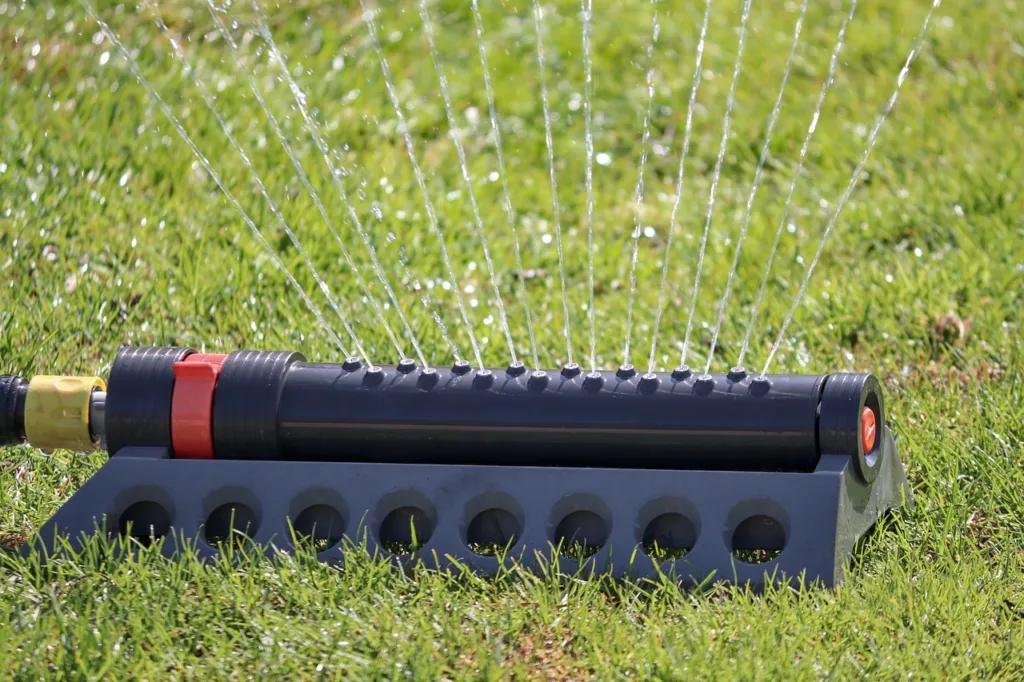
👨🦲 Overseed Bald Or Thinning Areas
Autumn is another great time to overseed your lawn, so if you’ve noticed any thinning or sparse spots over the summer, now is the time to address them.
Use the same grass seed from earlier in the year, or buy a new batch if you used up all the previous seed.
🍲 Use An Autumn/Winter Lawn Feed
You should also consider using an autumn/winter lawn feed at this time of the year.
Autumn/winter fertilizers encourage root growth, strengthening your lawn while the grass lies dormant over the cool months.
If you’re after a recommendation for autumn/winter grass feed, we’ve had a great experience with Proctors Autumn & Winter Lawn Feed.
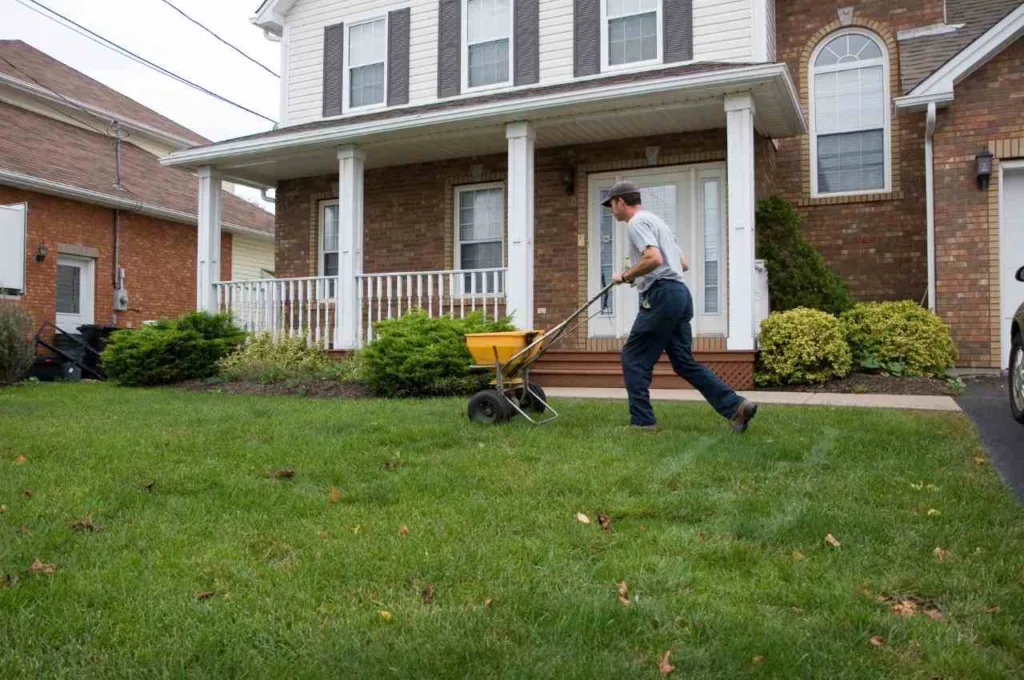
🛠 Carry Out Lawn Repairs
If you’ve noticed any lumps or indentations on your lawn, topdress the indents to level out the ground. Topdressing a lawn involves leveling out a lawn with a mix of materials such as sand, soil, peat, and loam.
Here’s a useful video on how to topdress a lawn:
If you’re really struggling with your lawn and want to start again from scratch, autumn is the best time to rip up the bad patches and apply new turf or seed.
🍁 Remove Fallen Leaves
If you live in the vicinity of trees, a big part of your October lawn care will be removing fallen leaves from your lawn.
Decaying leaves block grass from receiving light and sunlight, causing it to turn yellow and die. Rake or sweep leaves off your lawn at least once a week – twice a week if you have a big tree in your garden that sheds heavily in the autumn – to keep your lawn as close to leaf-free during this season as possible.
☃️ Winter Lawn Care Tasks
December-February
The winter months in the UK are December, January, and February. During these months, which are characterized by wet and frosty weather, you’ll only have a few tasks on your lawn care calendar.
❌ Mow Only If Necessary
Most lawn care professionals advise not to mow your lawn at all in January and February. It’s not usually necessary, since grass is dormant in the cold, frosty months.
But December might still be mild enough in the UK for your grass to grow, so get your mower out once or twice – only if necessary.
Be mindful of when you mow in the winter. Avoid mowing if the grass is damp or frosty. Wait for a clear, dry day.
If you have no choice but to mow wet grass, we’ve shared how best to do it in this guide to mowing wet grass.
🧰 Service Your Mower
Winter is a great time to service your mower and get it ready for use in spring.
If you have a petrol mower, servicing will include draining and replacing the petrol, topping up the oil, cleaning the spark plug, and sharpening the blade. Electric and battery-powered mowers just need their blades sharpened.
The average lifespan of a mower is 7-12 years, depending on the mower type and materials, and how well you’ve cared for it.
If your mower is past its best and you don’t think it can take another year, consider buying a new lawn mower. We have plenty of guides for folks shopping for mowers. A great place to start is with our guide to the best lawn mowers for UK gardens.
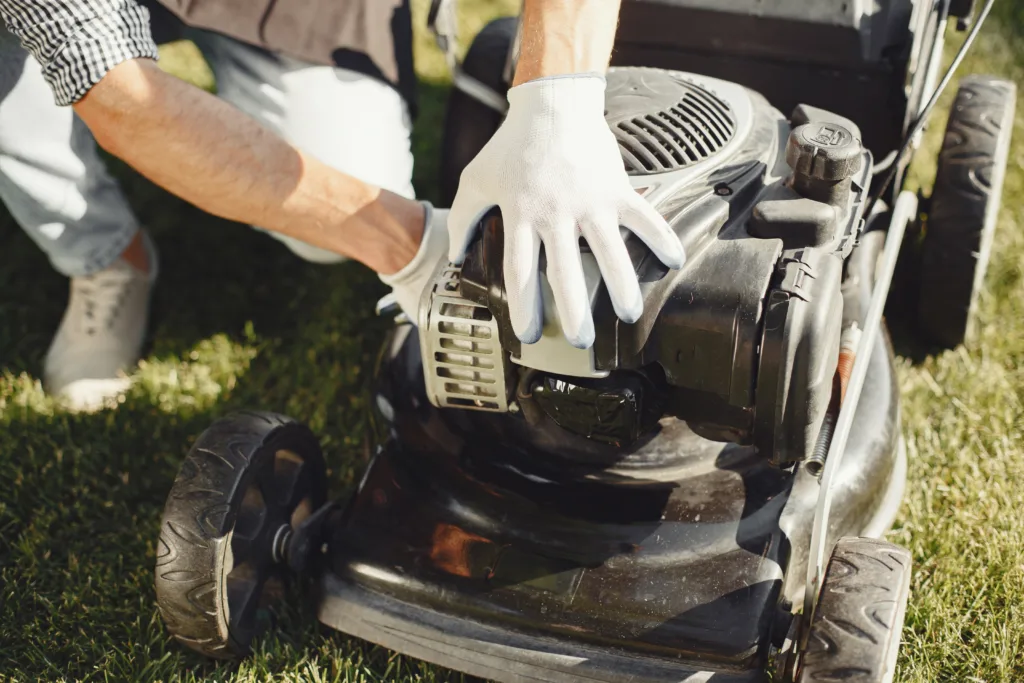
🗑 Clear Out Old Lawn Care Products
Another admin task to do over the cooler season is to clear out any old lawn care products in your shed or outhouse.
Outdated products may be less effective or even dangerous to use on your lawn. Throw out or carefully dispose of any out-of-date grass seed, fertilizers, and weed killers.
Make space in your shed for new products if needed.
🚦 Begin Preparing Your Soil To Sow Seed
If the weather is suitable, start preparing your soil to sow seed (if you have sparse patches that will need addressing).
If you don’t have any from last year, buy a fresh batch of grass seed, ready to start again in spring.
🏎 Quick-Fire Lawn Care Tips
Let’s finish this article with some quick-fire lawn care tips:
Never mow a wet lawn. Mowing wet grass increases clumping of grass clippings and may clog your mower. You may also spoil your garden by leaving mower wheel ruts in the wet soil.
Mow according to your grass’ schedule, not your own. Grass grows at different rates throughout the year. Start mowing regularly as grass grows quicker in late spring, then get your mower out according to how quickly your grass grows throughout the season.
Consider mulching. Mulching your lawn is when your mower cuts grass up small and leaves the clippings on your lawn as a natural lawn feed. This dead grass provides a source of nutrients for your lawn, and speeds up your mowing as you don’t need to empty the clippings elsewhere. Check out the best mulching mowers here.
Water your lawn deeply and infrequently. This is more effective than doing a shallow daily water, where most water will likely evaporate away.
Prevent weed growth through grass growth. Rather than using potentially damaging weed killers on your lawn, focus on encouraging thick, healthy grass growth, which will choke out weeds. A well-maintained lawn has a much lower likelihood of weed growth.
Don’t cut too low. You might like the look of a closely cut lawn, but scalping your grass could kill it because the grass blades don’t have a big enough surface area to photosynthesize (which is essential for healthy growth).
Encourage beneficial insects. Promote a balanced ecosystem in your lawn by attracting beneficial insects like ladybugs, lacewings, and ground beetles, which feed on harmful pests that could affect your lawn health. Plants like yarrow, angelica, sweet alyssum, and marigolds are good for this purpose.
🏁 Final Word
Phew – you made it to the end of our extensive seasonal lawn care guide.
Hopefully, you now have some important tasks to add to your lawn care calendar, and you have a better idea of how to look after your lawn year-round.
If you’re looking for more monthly gardening tips, check out our blog. We have plenty of handy guides that should help you, whether you’re looking to buy a new lawn mower, you need to resolve a lawn issue, or you just want to know how to keep your lawn in tip-top condition.
